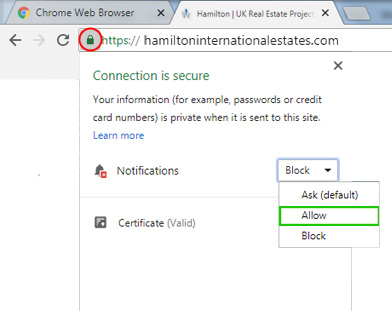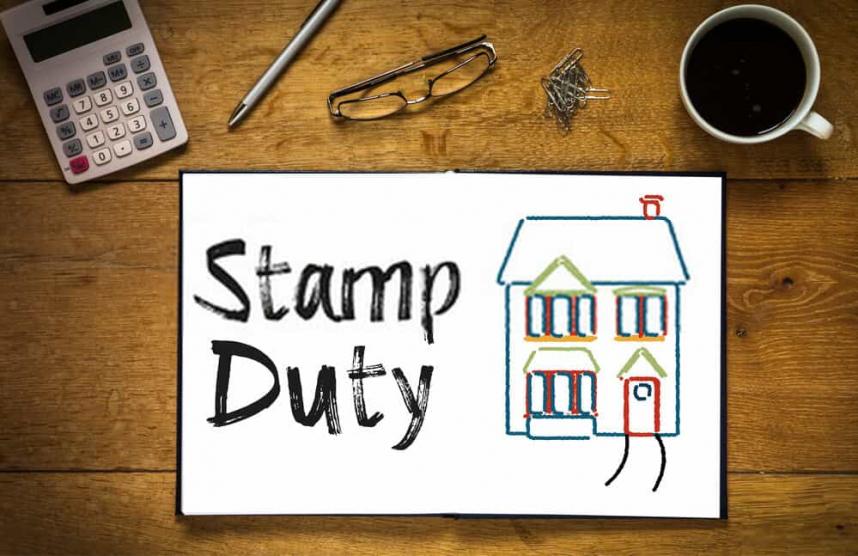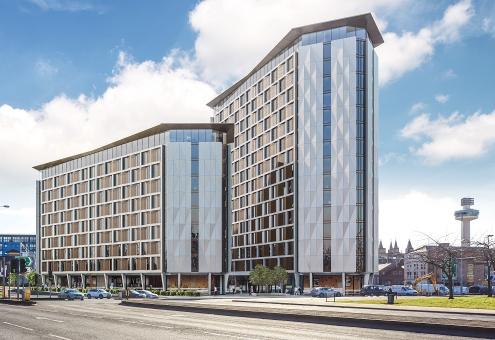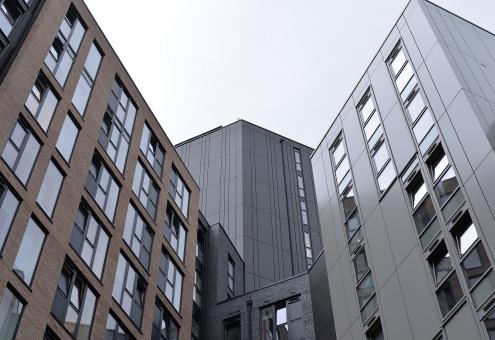How To Avoid Stamp Duty on Second Home
09 Jun 2020
Property transactions require several different types of expenses where one should take into consideration the legal costs, the agents' fees and also the stamp duty that is charged on buyers in England and Northern Ireland when the cost of the residential property is in the range of £125,000, or £300,000. The tax applies to both freehold and leasehold.
What Is Stamp Duty?
Stamp duty is taken by the government on residential property transactions that are of value more than £125,000. The tax was introduced in the UK in 1694, primarily to raise funds for wars, but now the volume of such transactions has increased significantly.
In 1997, the brand threshold was introduced to tax differently for different types of properties, but the market grew significantly since then as the market witnessed a rapid growth in house prices.
The government claims the buyers are paying less stamp duty as compared to historical figures, but there has been a growth in the receipt of money through such schemes, and it is wrong to blame the new band of taxes for the slowdown in the real estate market.
People who are buying additional residential property worth £40,000 or more have to pay additional tariffs on the second homes. The rules apply in the case of buy-to-let, or holiday homes or second homes bought for investment purposes.
One may have to pay more if the property is located in a foreign country, and it also applies in case you own a share in a property. The additional duty is levied on the whole value of the real estate over a given limit.
How Much Is the Stamp Duty for Second Homes?
-
In April 2016, an extra 3 per cent was added as stamp duty for the second property (SDLT), but first time home buyers were given exemption from paying on homes worth up to £300,000 in November 2017. In the 2017 Autumn Budget, SDLT was removed for first time buyers for properties worth £300,000.
-
The lower tax rate was applicable for properties up to £500,000, and first-time buyers were expected to pay 5% on the difference. In the Autumn Budget session, the first time buyers who were investing in shared ownership were also provided relief in the initial deals bought after 22 November 2017.
-
All homes were subjected to a 3 per cent duty surcharge where the band system determine the rate – If the transaction involves investment less than £125,000, it can be subjected to tariffs in the range of 0 to 3% and the cost in the range of £125,000 to £250,000 are subjected to 5% rates instead of 2%. The second homes in the price range of over £1.5million are subjected to 15 per cent instead of 12 per cent.
-
The first time buyers investing in homes worth over £500,000 in cities like London do not pay for the initial £300,000, and they have to pay 5 per cent of the remaining money.
-
Even in the condition that the main residence is overseas, the buyer needs to pay the duties for the second home. However, if the main residence is not owned and is rented, then a new buy to let stamp duty may not be subjected to it.
-
Homebuyers who are investing for others will still be paying it as it will be considered to be their second home.
-
Those who own two homes as they bought a new one but have not sold the older one will have to sell the older one in three years of buying the new one to dodge the tax.
When Do You Pay Stamp Duty?
It is paid in 30 days of buying a second home, and its value is based on the value of the home; if the value of the property is less than £125,000 - the rate is zero. If the stamp duty for a second property is not paid, one may be charged a £100 penalty plus interest.
As per the stamp duty changes imposed in April 2016, one has to pay it even in case of leasehold agreement extensions where the new leases run for over 7 years.
Many websites provide online stamp duty calculators instructions and apps where you need to state if you are buying for the first time or as an additional. It will ask if the property type is residential or commercial and also the date when you plan to sell the primary residence, and then the calculators can provide an approx figure related to the amount you need to pay.
One should hire a property advisor to know more about the calculations and exemptions. An expert can provide general information about the change in rates applicable in such deals, or one can speak to an independent tax and legal specialist to get customized tax advice.
When Will Stamp Duty Change?
The stamp duty is paid by the buyer and not by the seller at the time of transfer of ownership, where you pay the duties in 14 days. In case you hire a conveyance, one may have to file the stamp duty and include the bills.
The rate one has to pay depends on many circumstances like
-
Anyone who is not a first-time buyer and is buying at a value of more than £125,000.
-
Those who are first-time buyers and the property are valued at more than £300,000.
-
Homeowners who remortgage and use the released funds to pay the existing loan, where the total amount is more than the threshold.
-
The condition is when a person is receiving equity, and the transfer of the equity is more than the threshold.
Under certain rules, if somebody is getting divorced and one of the partners is moving out of the marital home, a property adjustment can be given to the other partner where the additional charges do not apply.
The band and percentage changes in stamp duty Scotland where the equivalent is SDLT and in Wales, it is called LTT–that works in the same manner, but the rates and price bands are different.
Certain complex situations when you cannot evade it -
-
The buyer cannot escape just by flipping properties.
-
In case you inherit a property and are sole owners, then you have to pay.
-
Couples who are separated, even when they are not divorced but own properties, will not be treated as the second homeowner. Still, those who are living together will be considered to be a single entity, and they will have to pay for a second home.
-
Also, they cannot avoid it just by buying a second home in the name of one partner and first in another’s name.
How Do I Claim a Stamp Duty Refund?
Those who are investing in a second home and are preparing to sell the previous residence can claim a refund. The HMRC has specific criteria to determine which of the houses in the main residence, like the one that has been mentioned on the Voter Id card, or the one that is close to the school, or the place where the family spends most of their time (if you are married), etc. The main residence is considered to get the calculations related to the stamp duties.
One has to provide all the related details to HMRC if they are eligible, like - the address of the property for which they paid the higher rate, the address of the main residence that was sold, the stamp duty that was paid during the transaction and amount you wish to claim back, totally the figures and sanction a duty refund.
One can claim in case you paid on buying a second home by mistake. In such a case, you need to apply for a refund in 12 months after the filing date of the returns, and in case of sale of primary residence, apply in 3 months for a duty refund.
One can apply for a duty refund online to the HMRC, where you need to mention the amount of claim requested for a refund, the total duty paid at the time of buying the property, the address, and the need to submit the required documents.
How To Avoid Stamp Duty for The Second Property?
If you are buying a new house and at the same time selling the old one, you can claim the extra pay. Even in the condition when you intend to sell the primary residence on a later date, you can get the deal finalized in the three years of buying a new property to get a refund.
[Certain conditions require the home buyer to sell the primary residence in 12 months of buying the second home to fill in the refund claim or sell before filing the tax returns form.]
If the second home is bought as a holiday home or buy to let, and if you stay in the primary residence for over three years, then you will not be able to apply for the refund claim.
-
One of the most common methods to evade such tax is by using the method of replacement of only or main residence rule that depends on many circumstances like
-
If the buyer previously owned a home that was the buyer’s only or main residence, which means they lived in such a residence.
-
If the home has been sold or otherwise disposed of.
-
If the new property is projected as the buyer’s only main house – or the place where the buyer intends to live.
For a property to be a person’s primary home, he/ she must live there. A condition of continuity is required in the way the home is occupied. For the purchases made after completing 26 November 2018, the legislation imposes a three-year time limit to buy the next home or primary residence, where the transaction should be completed following the sale of the former residence to escape 3% rates.
In the case of purchasing a new home, if there are any delays in selling the previous residence, one will have to pay the additional rate.
How To Avoid Paying Stamp Duty on A Second Home?
SDLT does not apply on the property that has been received as a gift, but in such conditions, inheritance taxes will apply.
-
One is also exempt in conditions when the property has been transferred following a divorce or separation after the end of a civil partnership.
-
You can gift the home to others, and if you are not the joint owner of the property, the rule of duties on the second home will not apply.
-
One can act as a guarantor who is not classed as an owner to avoid an additional rate.
-
When the savings are put in the account with the mortgage lender, it is considered to be a deposit where you can retain the ownership of funds.
-
In the case of inherited property, if you inherit less than 50%, you may be exempt if you buy a residential address with property in 3 years.
The rule does not apply in conditions -
-
If you are buying the property at a price below the threshold mentioned in the criteria.
-
If the person is transferring property deeds to another person.
-
A first-time buyer who is investing in a home worth less than £300,000.
-
Anyone who is in the situation where the equity or property is transferred by the court, like after divorce proceedings.
-
People who get the property at will are not obliged to pay it.
-
People who have shared in another home that is considered to be a single unit by the HMRC may have to pay the tax even in case they are first time buyers. This is applicable in conditions when a person owns a share in buy it let and is investing in another home.
-
Those who are guarantors are not subjected to it, as it is considered to be equivalent to ownership, and the criteria of guarantors can be applied for buying a home for children.
-
If somebody plans to buy a property for children where they acquire funds through a lender and the parent remains the owner of the money, then the transaction is not subjected to stamp duty on a second home.
-
One can either directly transfer property under the child’s name or use the method of homeownership transfer through a trust to avoid paying.
-
There are many other conditions when the transaction may be awarded an exemption, like when the property is used for charitable purposes or is listed in the right to buy, compulsory purchases, or is offered a special discount related to multiple dwelling or shared ownerships.
-
If you hold a share in a property, then in case of buying a home, you can get an exemption if the shared home is sold. This can happen if two people who are not married or in any civil partnership agree to buy a property in the name of one person, while they intend to sell their main residence.
How Do I Avoid Stamp Duty on A Second Home UK?
If you transfer some of the home value, which happens in the conditions of diverse or legal separation of a couple, and a per cent of the property is transferred to the other.
Transfer of deeds to someone else as a gift or in the will. People who transfer the deeds are not obliged to pay the stamp duty as per market value.
In case you exchange the property with another, each will have to pay based on the market value of the property.
In the case of leasehold extension, it can be avoided in the condition of the extended lease for up to 90 years were the home becomes the Principal Private Residence or in case of Buy to let where the residential lease is extended for over 90 years a premium of below £40,000.
People who invest in mobile homes, caravans, and houseboats are not considered for the tax.
One can dodge such taxes by investing in mixed-use properties like the ones that are used for residential and commercial purposes, or the premises used for running a business are exempt in certain conditions. But it can also expose the homeowner to higher business rates and taxes on capital gains.
Categorised in: All News














